
Cedarhurst (516) 374-3668
Franklin Square (516) 775-8440

Cedarhurst (516) 374-3668
Franklin Square (516) 775-8440

Older adults are at an increased risk of developing foot problems. If you have heel pain or pain that is located at the back of your feet, chances are that it may be one of three conditions: plantar fasciitis, bursitis, or an Achilles tendon injury. Plantar fasciitis is the most common form of heel pain. This occurs when the plantar fascia tissue on the bottom of the foot gets injured or irritated and inflamed, typically through overuse. Plantar fasciitis pain is usually more intense in the morning or after periods of rest. Your podiatrist may treat it with custom orthotics, physical therapy, corticosteroid injections, shockwave therapy, or by other means. Bursitis is an inflammatory condition that affects the bursa sac between your Achilles tendon and heel bone at the back of your foot. This is a fluid filled sac that cushions joints and bones, helps protect the tendon, and reduces friction. This bursa can become inflamed, painful, swollen, or red from repetitive motions or direct pressure. The Achilles tendon can suffer from various injuries such as ruptures, tendonitis, or enthesopathy, which are typically caused by intense or repetitive strain on the tendon. If you feel any of the symptoms described here, have a podiatrist examine you and perform whatever tests are necessary to properly diagnose your condition and devise an effective treatment plan.
Many people suffer from bouts of heel pain. For more information, contact Robert Stein, DPM of South Shore Foot Care. Our doctor can provide the care you need to keep you pain-free and on your feet.
Causes of Heel Pain
Heel pain is often associated with plantar fasciitis. The plantar fascia is a band of tissues that extends along the bottom of the foot. A rip or tear in this ligament can cause inflammation of the tissue.
Achilles tendonitis is another cause of heel pain. Inflammation of the Achilles tendon will cause pain from fractures and muscle tearing. Lack of flexibility is also another symptom.
Heel spurs are another cause of pain. When the tissues of the plantar fascia undergo a great deal of stress, it can lead to ligament separation from the heel bone, causing heel spurs.
Why Might Heel Pain Occur?
Treatments
Heel pain should be treated as soon as possible for immediate results. Keeping your feet in a stress-free environment will help. If you suffer from Achilles tendonitis or plantar fasciitis, applying ice will reduce the swelling. Stretching before an exercise like running will help the muscles. Using all these tips will help make heel pain a condition of the past.
If you have any questions please contact our offices located in Cedarhurst and Franklin Square, NY . We offer the newest diagnostic and treatment technologies for all your foot and ankle needs.

A common injury to the bones surrounding the ankle joint is a broken ankle. This is a complex joint because it is the point where three bones are joined. There are two bones above the joint that are called the tibia and the fibula, and below the joint is where the talus is located. When patients have a broken ankle, it is generally the tibia or fibula that becomes fractured. This type of break may be treated without surgery if the ankle joints remain stable. Symptoms that many people can experience with a broken ankle include swelling and bruising, and it is often difficult to walk. An X-ray is typically performed to provide an accurate diagnosis, and this is preceded by having the correct treatment begin. A cast or a boot is often recommended to provide accurate stability as the healing process occurs. If you have broken your ankle, please confer with a podiatrist who can guide you toward the correct treatment options.
Broken ankles need immediate treatment. If you are seeking treatment, contact Robert Stein, DPM from South Shore Foot Care. Our doctor can provide the care you need to keep you pain-free and on your feet.
Broken Ankles
A broken ankle is experienced when a person fractures their tibia or fibula in the lower leg and ankle area. Both of these bones are attached at the bottom of the leg and combine to form what we know to be our ankle.
When a physician is referring to a break of the ankle, he or she is usually referring to a break in the area where the tibia and fibula are joined to create our ankle joint. Ankles are more prone to fractures because the ankle is an area that suffers a lot of pressure and stress. There are some obvious signs when a person experiences a fractured ankle, and the following symptoms may be present.
Symptoms of a Fractured Ankle
If you suspect an ankle fracture, it is recommended to seek treatment as soon as possible. The sooner you have your podiatrist diagnose the fracture, the quicker you’ll be on the way towards recovery.
If you have any questions, please feel free to contact our offices located in Cedarhurst and Franklin Square, NY . We offer the newest diagnostic and treatment technologies for all your foot care needs.
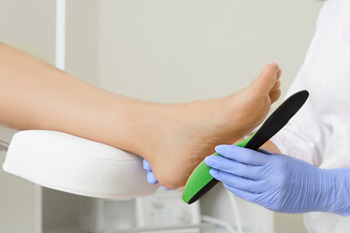
Orthotics are shoe inserts that can be recommended to correct problems in your gait or the structure of your feet. Overpronation is one kind of gait issue that can potentially be corrected with the use of orthotics. An individual has overpronation when their feet excessively roll inward during walking or running for shock absorption purposes. Overpronation ultimately puts unnecessary pressure both on the big toe and on the entire inner foot. To correct overpronation before it leads to other complications, you might use orthotics. Custom-made orthotics that are specifically fit to your foot type may be able to restrict the extent to which your foot rolls inward through arch support padding. To reduce strain on your ankle from overpronation, orthotics can redistribute and reallocate the pressure you put on your feet. Orthotics might even have heel wedges to restrict how much the heel moves forward when the feet are in motion. However, it is important to note that in some cases orthotics alone might not completely correct and eliminate your overpronation. If you have overpronation and are interested in possibly using orthotics, contact your podiatrist for help.
If you are having discomfort in your feet and would like to try orthotics, contact Robert Stein, DPM from South Shore Foot Care. Our doctor can provide the care you need to keep you pain-free and on your feet.
What Are Orthotics?
Orthotics are inserts you can place into your shoes to help with a variety of foot problems such as flat feet or foot pain. Orthotics provide relief and comfort for minor foot and heel pain but can’t correct serious biomechanical problems in your feet.
Over-the-Counter Inserts
Orthotics come in a wide variety of over-the-counter inserts that are used to treat foot pain, heel pain, and minor problems. For example, arch supports can be inserted into your shoes to help correct overarched or flat feet, while gel insoles are often used because they provide comfort and relief from foot and heel pain by alleviating pressure.
Prescription Orthotics
If over-the-counter inserts don’t work for you or if you have a more severe foot concern, it is possible to have your podiatrist prescribe custom orthotics. These high-quality inserts are designed to treat problems such as abnormal motion, plantar fasciitis, and severe forms of heel pain. They can even be used to help patients suffering from diabetes by treating foot ulcers and painful calluses and are usually molded to your feet individually, which allows them to provide full support and comfort.
If you are experiencing minor to severe foot or heel pain, it’s recommended to speak with your podiatrist about the possibilities of using orthotics. A podiatrist can determine which type of orthotic is right for you and allow you to take the first steps towards being pain-free.
If you have any questions please contact our offices located in Cedarhurst and Franklin Square, NY . We offer the newest diagnostic and treatment technologies for all your foot and ankle needs.
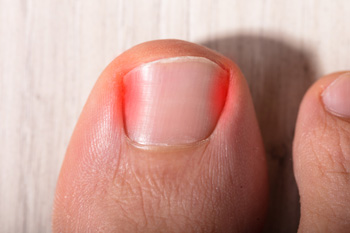
Ingrown toenails are very uncomfortable afflictions of the feet. Usually affecting the big toe, ingrown toenails occur when the side of a toenail essentially grows into the skin surrounding the nail. As a result, the skin then covers the nail partially or completely at the side of the nail. Ingrown toenails can be very painful. This pain is only exacerbated if the ingrown toenail becomes infected, which can lead to redness and swelling in the affected area. There are several steps that you can take to prevent an ingrown toenail. For example, you can make sure that you are properly cutting your nails to keep them at an appropriate length, neither too long nor too short. You also could keep them cut in an appropriate shape, straight cut at the top instead of curved. You might even be sure that the shoes that you typically wear are spacious enough in the toe box and do not press against your toes. If you have an ingrown toenail or are concerned about getting one, consult with a podiatrist.
Ingrown toenails can become painful if they are not treated properly. For more information about ingrown toenails, contact Robert Stein, DPM of South Shore Foot Care. Our doctor can provide the care you need to keep you pain-free and on your feet.
Ingrown Toenails
Ingrown toenails occur when a toenail grows sideways into the bed of the nail, causing pain, swelling, and possibly infection.
Causes
Prevention
Because ingrown toenails are not something found outside of shoe-wearing cultures, going barefoot as often as possible will decrease the likeliness of developing ingrown toenails. Wearing proper fitting shoes and using proper cutting techniques will also help decrease your risk of developing ingrown toenails.
Treatment
Ingrown toenails are a very treatable foot condition. In minor cases, soaking the affected area in salt or antibacterial soaps will not only help with the ingrown nail itself, but also help prevent any infections from occurring. In more severe cases, surgery is an option. In either case, speaking to your podiatrist about this condition will help you get a better understanding of specific treatment options that are right for you.
If you have any questions please feel free to contact our offices located in Cedarhurst and Franklin Square, NY . We offer the newest diagnostic and treatment technologies for all your foot and ankle needs.
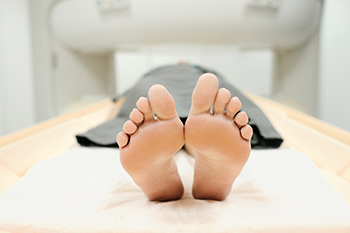
Stress fractures of the foot, considered to be overuse injuries, are cracked bones that result from repetitive impact. They are common to runners, especially those whose footwear does not support the foot sufficiently. Women with osteoporosis are also prone to getting stress fractures. A podiatrist can diagnose stress fractures, starting with a medical history of your past injuries, along with a review of your eating habits, exercise regime, and daily activities. X-rays may not be able to detect the hairline fractures until a month or so following the injury, so other types of imaging tests may be necessary. A bone scan may be conducted, calling for a dose of radioactive material given intravenously. However, the results may not be conclusive, because many types of bone problems look alike. An MRI (magnetic resonance imaging) test may be administered. This process uses radio waves and a strong magnetic field that create detailed images of the bones. The MRI is considered to be the best indicator of stress fractures, because it shows fractures sooner than an X-ray can, and it also differentiates between bone and soft tissue injuries. An ultrasound test or a CT scan (computed tomography) also can be used to diagnose stress fractures. If you believe the pain in your feet is being caused by a stress fracture, please consult a podiatrist for diagnosis and treatment.
Activities where too much pressure is put on the feet can cause stress fractures. To learn more, contact Robert Stein, DPM from South Shore Foot Care. Our doctor can provide the care you need to keep your pain free and on your feet.
Dealing with Stress Fractures of the Foot and Ankle
Stress fractures occur in the foot and ankle when muscles in these areas weaken from too much or too little use. The feet and ankles then lose support when walking or running from the impact of the ground. Since there is no protection, the bones receive the full impact of each step. Stress on the feet can cause cracks to form in the bones, thus creating stress fractures.
What Are Stress Fractures?
Stress fractures occur frequently in individuals whose daily activities cause great impact on the feet and ankles. Stress factors are most common among:
Symptoms
Pain from the fractures occur in the area of the fractures and can be constant or intermittent. It will often cause sharp or dull pain with swelling and tenderness. Engaging in any kind of activity which involves high impact will aggravate pain.
If you have any questions please feel free to contact our offices located in Cedarhurst and Franklin Square, NY . We offer the newest diagnostic and treatment technologies for all your foot and ankle needs.
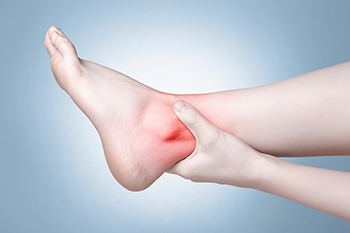
Fluid-filled ganglion cysts are benign masses that can develop in tissue surrounding a tendon as well as in other locations. Ganglion cysts in the feet can occur on top of the foot or in the ankle and are sometimes visible on the skin. If they press against a tendon, joint, or footwear, they can be painful. It is a good idea to have your podiatrist evaluate and diagnose any growth that is causing pain in your ankle or elsewhere on your feet whether or not you suspect a ganglion cyst. They will typically monitor the growth and may prescribe custom orthotics or footwear modifications to alleviate pressure being placed on it. If the cyst becomes overly painful or bothersome, your podiatrist may try aspirating it or using steroid injections to shrink it. A surgical treatment may prove beneficial if the cyst returns or is non-responsive to more conservative treatments.
Ankle pain can have many different causes and the pain may potentially be serious. If you have ankle pain, consult with Robert Stein, DPM from South Shore Foot Care. Our doctor will assess your condition and provide you with quality foot and ankle treatment.
Ankle pain is any condition that causes pain in the ankle. Due to the fact that the ankle consists of tendons, muscles, bones, and ligaments, ankle pain can come from a number of different conditions.
Causes
The most common causes of ankle pain include:
Symptoms
Symptoms of ankle injury vary based upon the condition. Pain may include general pain and discomfort, swelling, aching, redness, bruising, burning or stabbing sensations, and/or loss of sensation.
Diagnosis
Due to the wide variety of potential causes of ankle pain, podiatrists will utilize a number of different methods to properly diagnose ankle pain. This can include asking for personal and family medical histories and of any recent injuries. Further diagnosis may include sensation tests, a physical examination, and potentially x-rays or other imaging tests.
Treatment
Just as the range of causes varies widely, so do treatments. Some more common treatments are rest, ice packs, keeping pressure off the foot, orthotics and braces, medication for inflammation and pain, and surgery.
If you have any questions, please feel free to contact our offices located in Cedarhurst and Franklin Square, NY . We offer the newest diagnostic and treatment technologies for all your foot care needs.

There are many people who take excellent care of the skin on their body by using different lotions and moisturizers, but the feet are often neglected. They carry the weight of the body, and a small amount of foot pampering can go a long way. There are several bones, muscles, ligaments and tendons in each foot, and this can make the feet susceptible to injury and stress. Performing gentle foot stretches and exercises can be beneficial in maintaining complete range of motion, and this can also help in balancing. It is important to wash and dry the feet thoroughly each day. This can help to eliminate dirt that can build up on the feet, and may help to prevent an infection. This can be followed by using a good moisturizer, which may help to prevent cracked heels from developing. When the nails are trimmed properly and frequently, an ingrown toenail may be avoided. Additionally, maintaining everyday foot care can be simple when the shoes that are worn fit correctly, and are comfortable. If you would like more information about the benefits and techniques of practicing everyday foot care, please consult with a podiatrist.
Everyday foot care is very important to prevent infection and other foot ailments. If you need your feet checked, contact Robert Stein, DPM from South Shore Foot Care. Our doctor can provide the care you need to keep you pain-free and on your feet.
Everyday Foot Care
Often, people take care of their bodies, face and hair more so than they do for their feet. But the feet are a very important aspect of our bodies, and one that we should pay more attention to. Without our feet, we would not be able to perform most daily tasks.
It is best to check your feet regularly to make sure there are no new bruises or cuts that you may not have noticed before. For dry feet, moisturizer can easily be a remedy and can be applied as often as necessary to the affected areas. Wearing shoes that fit well can also help you maintain good foot health, as well as making it easier to walk and do daily activities without the stress or pain of ill-fitting shoes, high heels, or even flip flops. Wearing clean socks with closed shoes is important to ensure that sweat and bacteria do not accumulate within the shoe. Clean socks help to prevent Athlete’s foot, fungi problems, bad odors, and can absorb sweat.
If you have any questions please feel free to contact our offices located in Cedarhurst and Franklin Square, NY . We offer the newest diagnostic and treatment technologies for all your foot and ankle needs.
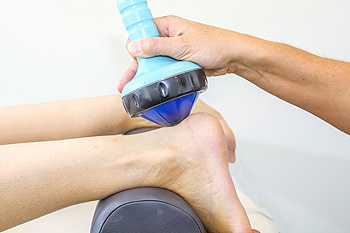
Plantar fasciitis is a foot condition that causes inflammation and pain in the connective tissues on the bottom of the feet. This can cause the foot to swell and feel tender, particularly the heel. Shockwave therapy is a non-invasive option that can be used to treat plantar fasciitis. It uses high-frequency sound waves, or vibrations, and heat to help break down scar tissue and reduce inflammation and pain. Usually, multiple sessions are done so that pain is worked through gradually. It is gentle and safe for the body and can be used with other treatments, such as cortisone injections and physical therapy. If you are experiencing pain from plantar fasciitis, please consult with a podiatrist who can talk to you about this treatment and other options for providing relief.
Shockwave therapy is a treatment commonly used to treat various injuries and conditions, particularly plantar fasciitis in the feet. To learn more, consult with Robert Stein, DPM from South Shore Foot Care. Our doctor can provide the care you need to keep you pain-free and on your feet.
Shockwave Therapy
Shockwave therapy is a new treatment option designed to treat bone conditions such as tennis elbow, shoulder pain, and others. Shockwave therapy uses high intensity sound waves that are directed to the affected tissues of the body with pinpoint accuracy. The effects are very beneficial, leading to a production of collagen fibers, eliminating inflammation.
Who Benefits from Shockwave?
Shockwave is recommended for patients suffering from heel pain and associated problems. Heel pain is a common condition which can be caused by obesity, overexertion, and spending a substantial amount of time on hard floors with your feet exposed and unsupported.
Fast and Easy
The therapy is actually a simple process that can leave patients feeling better the very next day. Shockwave therapy is not as dramatic as it sounds. It enables more blood flow to effected areas, addressing the source of the problem and allowing treatment to last for a long time.
Treatment & Recovery Time
Shockwave treatment will enable your feet to recover quickly. This is especially important since surgery is not required. It is cost effective and does not require the use of anesthesia. This treatment is a better option to surgery, since it is proven safe.
If you have any questions, please feel free to contact our offices located in Cedarhurst and Franklin Square, NY . We offer the newest diagnostic and treatment technologies for all your foot and ankle needs.
Every patient is unique and so are treatments. The information on this website is for educational purposes and each individual
patient care model may differ.